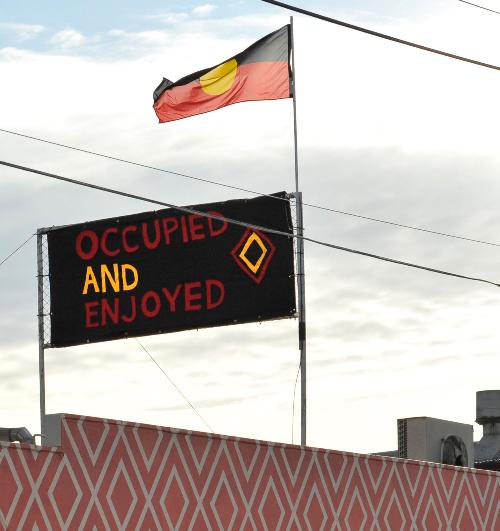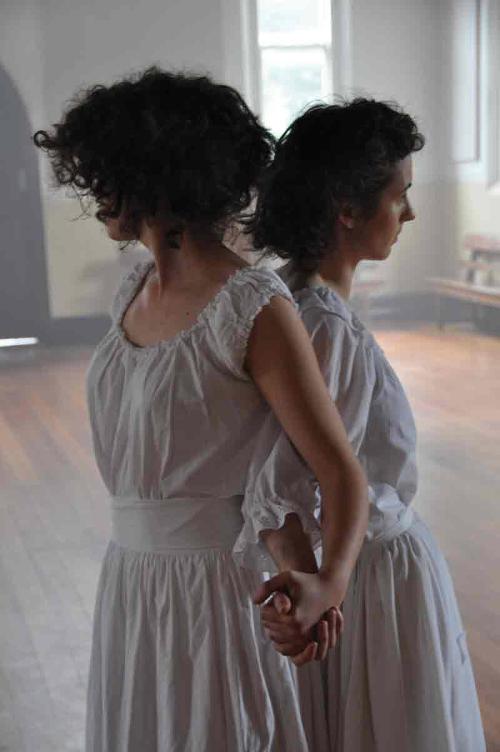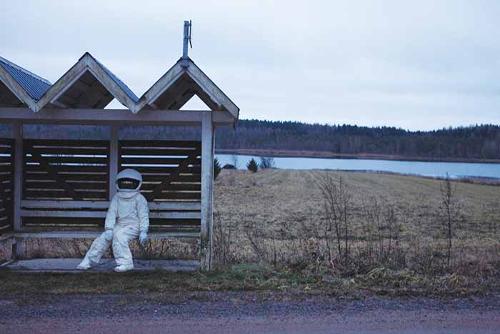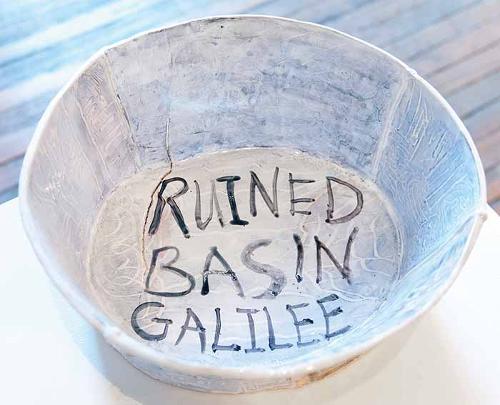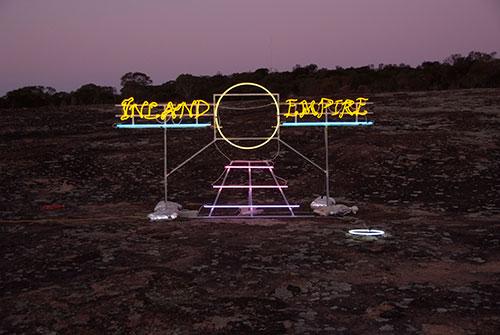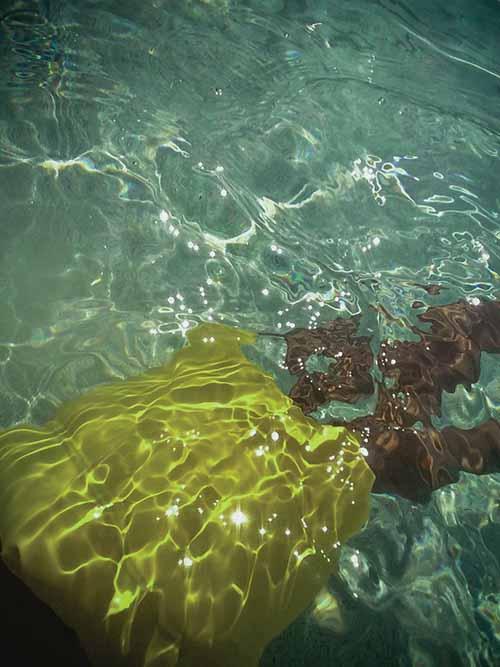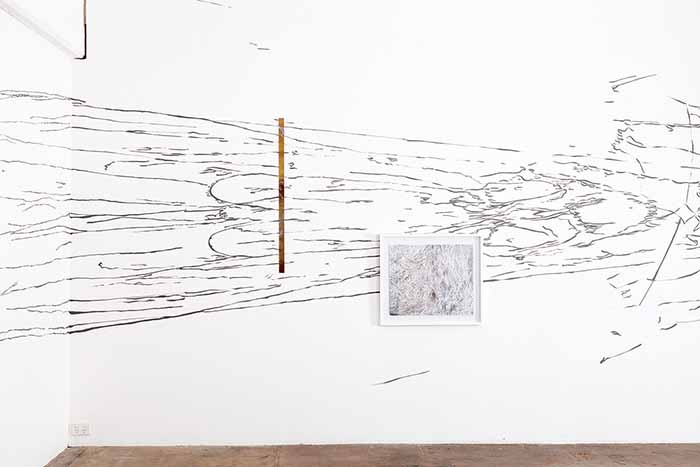
Melbourne artist Tamsin Green's exhibition Covers constellated a number of art historical references and techniques that together formed a complex triangulation of themes: desire, narcissism and erotic autonomy. While the installation continued her ongoing exploration of a "certain history of looking“, which has in the past included studies of perspective, sight and blindness, the act of looking took on a more social inflection here. Tensioned by the interplay between concealing and revealing, the exhibition spoke in indirect ways about the curatorial culture of social media (the notion of self-design), and its impact on intersubjective relationships.
The exhibition comprised a large wall drawing that rounded a corner of the main gallery space upon which three smaller works were hung. The wall drawing took the form of a horizontally symmetrical Rorschach, which made every effort to convince its viewer of being a depiction of a vagina. Elongated and spread as it was across two walls meeting at a ninety degree angled corner, the wall drawing denied a single-point perspective, the possibility of which was further ridiculed by its suggested anamorphic quality, forcing the viewer out the door to find the non-existent vantage point that would bring the composition into focus.
Smaller, discreet works - Valley, a copper plate etching, and Original Frottage, a grey lead rubbing – were hung on top of the wall drawing, each occupying a wall either side of the corner. Valley comprised a sparse few lines suggesting crevices or ravines in a mountainous landscape, but in fact depicted an extreme close-up of a wrinkled scrotum. The framed work Original Frottage comprised an even scattering of black dots and short, curved, organic lines: perhaps an aerial topography of some Martian landscape, or a microscopic image of skin and hair follicles. The landscape image was, in fact, made Max Ernst–style: a frottage over a textured surface, specifically the stucco walls of the corridor of a psychoanalyst’s office on High Street, Northcote in Melbourne. Moreover, the surface which the artist rubbed was not merely a blank sheet of paper, but rather more purposely the verso of a reproduction of Gustav Courbet’s The Origin of the World (1866), that notoriously cropped image of the female sex.
Both Valley and Original Frottage were made by pressing two surfaces against one another, but in their installation across two walls, the male and female genitalia were suspended apart, not unlike the bride sectioned from her desiring bachelors in The Large Glass (1915–23), doomed to eternal onanism, or the peeping-tom viewer positioned before the door in Duchamp’s Étant donnés of 1946–66. A further sectioning-off was implied in Covers by the third work hung on the wall drawing, Measure, a thin, exactly one metre-long, vertical slither of a photograph, which partitioned the two sexes. (In a further nod to visual obstruction, the photograph referenced the wood-panelled cabinet doors purpose-built to shield Courbet’s Origin of the World from the unsuspecting cleaning lady employed by its one-time owner, Jacques Lacan.)
The combination of sexual desire and narcissism, looking and hiding in Covers may amount to something of an observation about contemporary human relationships viz. online dating, or social media more generally. The installation with its multiple perspectives evokes the circular trap by which the gesture of looking out (at other people) is short-circuited by the gesture of looking in (the conscious presentation/performance of oneself and its continuous editing). A “cover picture“ is, after all, the name given to the masthead image used on all Facebook profiles.

